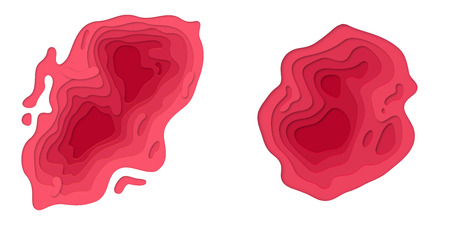Introduction to Chemical Peels
Chemical peels are a popular skincare treatment in the United States, known for their ability to refresh and rejuvenate the skin. But what exactly are chemical peels, and how do they work? In simple terms, a chemical peel uses a special solution applied to the skin to gently remove its outer layers. This process helps reveal fresher, smoother skin underneath and can address concerns like fine lines, uneven tone, acne scars, and sun damage.
How Chemical Peels Work
When you get a chemical peel, your skincare provider applies a chemical solution—often made from acids like glycolic acid, salicylic acid, or trichloroacetic acid (TCA)—to your face. The solution causes the top layers of skin to exfoliate and eventually peel off over several days. As this happens, new skin cells replace the old ones, leading to a brighter complexion and improved texture.
Types of Chemical Peels
| Type | Main Ingredients | Depth of Peel | Common Uses |
|---|---|---|---|
| Superficial Peel | Alpha Hydroxy Acids (AHA), Salicylic Acid | Light (outermost layer) | Mild discoloration, rough skin, acne |
| Medium Peel | Trichloroacetic Acid (TCA), Glycolic Acid | Middle layers of skin | Age spots, fine lines, moderate discoloration |
| Deep Peel | Phenol, High-strength TCA | Deeper layers of skin | Severe wrinkles, deeper scars |
Why People Love Chemical Peels
Chemical peels are loved because they offer visible results without surgery. They can be customized for different skin types and concerns—whether you have oily or dry skin, light or dark complexion. Plus, downtime varies depending on the strength of the peel, so there’s an option for everyone’s lifestyle.
2. Understanding Skin Types
Before choosing the right chemical peel, it’s important to know your skin type. Each skin type reacts differently to various ingredients and strengths of chemical peels. Here’s a simple guide to help you identify your skin type and what it means for your chemical peel options.
How to Identify Your Skin Type
If you’re unsure about your skin type, start by washing your face with a gentle cleanser and patting it dry. Wait for about an hour without applying any products. Then, observe how your skin feels and looks:
| Skin Type | Main Characteristics | How It Feels After Cleansing |
|---|---|---|
| Oily | Shiny, enlarged pores, prone to breakouts | Feels greasy or looks shiny, especially in the T-zone (forehead, nose, chin) |
| Dry | Flaky, rough patches, tightness | Feels tight or rough, may look dull or ashy |
| Combination | Oily in some areas (usually T-zone), dry or normal elsewhere | T-zone feels oily but cheeks feel dry or normal |
| Sensitive | Easily irritated, redness, burning or itching sensations | Might feel itchy or show redness quickly after cleansing |
| Normal | Balanced moisture and oil, few imperfections | Feels comfortable and balanced, not too oily or dry |
Why Skin Type Matters for Chemical Peels
Chemical peels use different acids and strengths. Picking the right one for your skin type ensures better results and less irritation. Here’s what each skin type should consider:
| Skin Type | Best Peel Types to Consider | Cautions & Tips |
|---|---|---|
| Oily/Acne-Prone | Salicylic acid, glycolic acid (lower concentrations) | Avoid overly harsh peels; can help unclog pores and reduce breakouts. |
| Dry | Lactic acid, mandelic acid (gentler AHAs) | Choose hydrating peels; avoid strong acids that might cause flakiness. |
| Combination | Mild glycolic or lactic acid; spot treat oily areas if needed. | Balance is key—avoid over-treating dry spots. |
| Sensitive | Mandelic acid, very mild lactic acid peels; patch test first! | Avoid high-strength peels; always do a patch test before full application. |
| Normal | Mild to moderate glycolic or lactic acid peels work well. | You have more flexibility but still start slow. |
Quick Tips:
- If you have sensitive skin, always check with a dermatologist before trying a new peel.
- If you’re new to chemical peels or unsure of your skin type, start with a lower strength and see how your skin reacts.
- Sunscreen is crucial after any chemical peel—your skin will be more sensitive to sunlight!
This basic understanding of your skin type helps you make smarter choices when selecting a chemical peel, leading to healthier and happier skin.

3. Common Types of Chemical Peels
Chemical peels come in different strengths and use various active ingredients to address specific skin concerns. Understanding the types—light, medium, and deep peels—can help you decide what’s best for your skin type and goals.
Light Chemical Peels
Light or superficial peels are the mildest option. They typically use ingredients like glycolic acid or salicylic acid. These peels gently exfoliate the outer layer of your skin (the epidermis), targeting minor discoloration, uneven texture, or acne.
- Glycolic Acid: Great for brightening dull skin and smoothing fine lines.
- Salicylic Acid: Ideal for oily or acne-prone skin, as it helps unclog pores and reduce breakouts.
Who Should Try Light Peels?
If you have sensitive skin, want minimal downtime, or are new to chemical peels, light peels are a safe starting point. These treatments usually require little to no recovery time.
Medium Chemical Peels
Medium peels reach deeper into the skin, targeting both the epidermis and part of the dermis (the middle layer). Trichloroacetic acid (TCA) is a popular ingredient in medium peels. These are effective for treating moderate wrinkles, sun damage, and uneven pigmentation.
- TCA (Trichloroacetic Acid): Helps with age spots, freckles, and moderate acne scars.
- Glycolic Acid (higher concentration): Used in some medium-strength formulas for more noticeable results.
Who Should Try Medium Peels?
If you’re looking to improve skin tone or texture beyond what light peels can offer—and don’t mind a few days of peeling or redness—medium peels may be right for you.
Deep Chemical Peels
Deep peels penetrate the lower dermal layers and use strong acids such as high-concentration TCA or phenol. They’re designed to treat deep wrinkles, significant sun damage, or pronounced scars. Deep peels provide dramatic results but require longer recovery time and should only be performed by experienced professionals.
- Phenol: Highly effective for deep wrinkles and severe sun damage but is rarely used due to its intensity and potential side effects.
- TCA (high concentration): Sometimes used for deep peels under medical supervision.
Who Should Try Deep Peels?
If you have significant signs of aging or scarring that haven’t responded to other treatments—and are prepared for several weeks of recovery—a deep peel might be an option to discuss with your dermatologist.
Chemical Peel Comparison Table
| Type | Main Ingredients | Skin Concerns Addressed | Downtime | Best For |
|---|---|---|---|---|
| Light Peel | Glycolic Acid, Salicylic Acid | Dullness, Fine Lines, Mild Acne | No to Minimal | Sensitive Skin, Beginners |
| Medium Peel | TCA, Glycolic Acid (high %) | Pigmentation, Sun Damage, Moderate Wrinkles/Scars | A Few Days (Peeling/Redness) | Mature or Sun-Damaged Skin |
| Deep Peel | TCA (high %), Phenol | Deep Wrinkles, Severe Scarring/Sun Damage | Several Weeks | Significant Aging or Scarring Issues |
This overview can help you understand which type of chemical peel might suit your unique skin needs. Always consult with a qualified professional before starting any peel treatment to ensure safety and optimal results.
4. Best Chemical Peels for Each Skin Type
Choosing the right chemical peel can make all the difference in your skin’s health and appearance. Since everyones skin is unique, its important to find a peel that matches your individual needs. Here’s a simple guide to help you pick the most effective chemical peel based on your skin type.
Understanding Your Skin Type
Before picking a peel, identify your skin type. The main categories are:
- Oily
- Dry
- Combination
- Sensitive
- Normal
- Mature/Aging
Chemical Peel Recommendations by Skin Type
| Skin Type | Recommended Peel Type | Main Benefits | Key Ingredients |
|---|---|---|---|
| Oily/Acne-Prone | Salicylic Acid Peel | Reduces oil, unclogs pores, targets breakouts | Salicylic Acid (BHA) |
| Dry/Dehydrated | Lactic Acid Peel | Gently exfoliates, boosts hydration, brightens dullness | Lactic Acid (AHA) |
| Sensitive/Redness-Prone | Mandelic Acid Peel | Mild exfoliation, soothes irritation, less likely to cause redness | Mandelic Acid (AHA) |
| Combination/Normal | Glycolic Acid Peel (Low-Strength) | Evens tone and texture, refines pores, boosts glow | Glycolic Acid (AHA) |
| Mature/Aging Skin | TCA or Jessner’s Peel (Professional Use) | Smooths fine lines, improves firmness and pigmentation issues | TCA (Trichloroacetic Acid), Resorcinol, Lactic & Salicylic Acids (Jessner’s) |
Tips for Getting the Most Out of Your Chemical Peel
- Start Slow: If you’re new to peels, begin with milder formulas and see how your skin reacts.
- Patching is Key: Always do a patch test first to avoid irritation or allergic reactions.
- Sunscreen is a Must: Peels make your skin more sensitive to the sun. Apply SPF daily!
- Consult a Pro: For deeper peels or if you have complex skin concerns, talk to a board-certified dermatologist or licensed esthetician.
5. Safety, Aftercare, and Side Effects
Essential Tips for a Safe Chemical Peel Experience
Chemical peels are popular treatments for improving skin tone, texture, and clarity, but its important to prioritize safety before and after your procedure. Here’s what you need to know to keep your skin healthy and glowing.
How to Prepare for a Chemical Peel
- Consult with a Licensed Professional: Always talk to a board-certified dermatologist or licensed aesthetician about your skin type and concerns before booking a peel.
- Avoid Sun Exposure: Stay out of direct sunlight and avoid tanning beds for at least one week prior to your peel.
- Stop Using Certain Products: Discontinue retinoids, exfoliants, and other harsh skincare products 3-5 days before treatment.
- Disclose All Medications: Let your provider know about any medications or supplements you’re taking that could affect healing.
Aftercare: What to Do After Your Peel
Your post-peel care routine is crucial for optimal results and minimizing complications. Here’s a simple guide:
| Step | What to Do | Why It Matters |
|---|---|---|
| Avoid Picking or Scrubbing | Let peeling skin shed naturally; don’t pick or exfoliate manually. | Prevents scarring and infection. |
| Moisturize Regularly | Use gentle, fragrance-free moisturizers as recommended by your provider. | Keeps skin hydrated and reduces discomfort. |
| Sunscreen Every Day | Apply broad-spectrum SPF 30+ even indoors for at least two weeks post-peel. | Protects sensitive new skin from UV damage. |
| Avoid Heat & Sweating | No hot showers, saunas, or intense workouts for 48 hours after the peel. | Reduces risk of irritation and uneven results. |
| Follow Up Appointments | Attend all scheduled check-ins with your provider. | Ensures proper healing and addresses concerns early. |
Potenial Side Effects to Watch Out For
Chemical peels are generally safe when performed correctly, but side effects can happen. Here’s what you may experience and when to contact your provider:
- Mild Redness & Swelling: This is common and usually resolves within a few days.
- Tingling or Tightness: Temporary sensations are normal as the old skin peels away.
- Browning or Flaking: Skin may darken slightly before peeling off; this is part of the process.
- Irritation or Burning: Persistent pain, severe redness, blisters, or oozing should be reported immediately as these may indicate an infection or allergic reaction.
- Pigmentation Changes: Those with deeper skin tones may be at higher risk for temporary or permanent discoloration—discuss this risk during your consultation.
The key to a great chemical peel experience is following your provider’s instructions closely before and after your treatment. If you ever feel unsure about a reaction or symptom, reach out to your skincare professional right away.
6. Consulting a Dermatology Professional
If you’re considering a chemical peel, it’s always a smart move to talk to a dermatology professional first. With so many different skin types and concerns, what works for one person may not be right for another. A licensed dermatologist or skincare expert can look at your unique skin needs and recommend the safest and most effective type of peel for you.
Why Professional Advice Matters
Chemical peels use active ingredients that can make a big difference in your skin—both good and bad. When used incorrectly, these treatments can cause redness, irritation, or even long-term damage. That’s why getting personalized advice is so important. A dermatology professional will:
- Assess your skin type and current skin health
- Review your medical history and any medications you’re taking
- Recommend the best peel strength and formula for your goals
- Give guidance on pre-peel prep and post-peel care
- Perform the procedure safely in a controlled setting
What Happens During a Consultation?
Your dermatologist will likely ask questions about your skin concerns, lifestyle, and any past reactions to skincare products. They might do a quick skin exam to check for sensitivity, acne, pigmentation, or other issues. Based on this information, they’ll suggest a treatment plan tailored just for you.
Chemical Peel Recommendations by Skin Type
| Skin Type | Common Concerns | Suggested Peel Type |
|---|---|---|
| Sensitive | Redness, irritation | Lactic acid (mild), Enzyme peels |
| Oily/Acne-Prone | Breakouts, enlarged pores | Salicylic acid peel, Glycolic acid (light) |
| Dry | Flakiness, dullness | Lactic acid (hydrating), Mandelic acid peel |
| Mature/Aging | Fine lines, uneven tone | TCA peel (medium-depth), Glycolic acid peel |
| Darker Skin Tones | Hyperpigmentation risk | Mandelic acid peel, Low-strength glycolic acid (with caution) |
The Bottom Line on Safety and Results
A DIY approach might seem convenient, but nothing beats the safety and results of working with a licensed professional. They have the experience and training to help you avoid unwanted side effects and get the glowing results you want. When in doubt, schedule a consultation before making any decisions about chemical peels.


